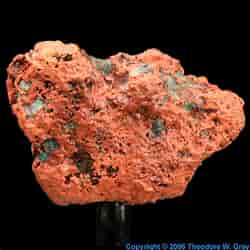The Peruvian mining sector may see joint-venture agreements in the future as a way to unlock new copper projects in remote areas that are not used to the industry.
Peru, the world’s No. 2 copper producer, has the vast majority of its copper mines concentrated in its Southern Andes. But long-stalled projects in a small area of the Northern Andes could be more efficiently built with a joint-venture or common infrastructure, as copper prices remain high.
“One way to have a smaller footprint and have a more efficient investment is to join the projects,” said Victor Gobitz, the president of Peru’s mining chamber SNMPE. “Or if it’s not a project with several partners, a joint-venture, then have common infrastructure, such as just one tailings dam.”
Gobitz is also the CEO of Antamina, one of Peru’s largest copper mines, co-owned by BHP, Glencore and Teck.
Gobitz said projects like Southern Copper’s Michiquillay, Newmont’s Conga and Galeno, owned by a subsidiary of China Minmetals Corp. could be unlocked with a joint-venture or common infrastructure. “When you look in a map at the location of (those) projects, it’s clear they are in the same district,” he said.
Those projects have a combined value of $10.8-billion, according to Peru’s mining ministry. Only Michiquillay has an expected start date of 2029, although those deadlines can often be delayed by many years.
Still, those copper projects are located in Peru’s Cajamarca region, which is known for its community opposition to mining. Conga was once ready to be built, but the project was shelved due to intense community objection. Newmont, however, has hinted it would still like to build Conga.
First Quantum recently bought a majority stake from Rio Tinto for the La Granja copper project, which is also located in Cajamarca.
Joint-ventures “have not been the story in the story,” Gobitz said, explaining mining companies have preferred to tackle projects alone. “But that is not necessarily what is more efficient or environmentally friendly.”



